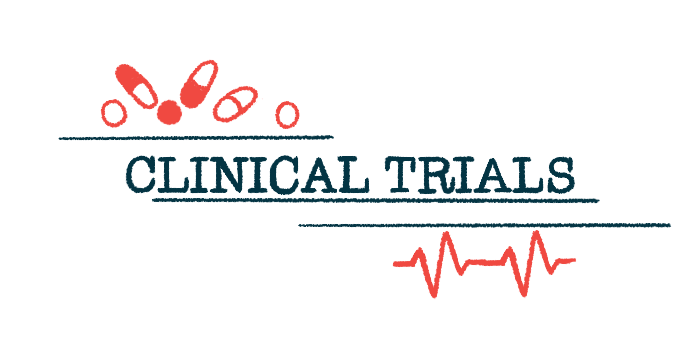Sotatercept plus PAH therapy improves walking abilities: STELLAR
Treatment in Phase 3 trial led to significant gains in 8 of 9 secondary measures

Adding sotatercept to standard therapies significantly improved the six-minute walking distance by more than 40 meters (131 feet) compared with a placebo among adults with pulmonary arterial hypertension (PAH).
This finding met the primary goal of STELLAR, a Phase 3 clinical trial evaluating the impact of 24 weeks, or six months, of sotatercept on patients’ walking abilities.
The investigational therapy, developed by Merck, also led to statistically significant improvements in eight of nine secondary measures, including a marked reduction in clinical worsening or mortality risk.
“The results from the Phase 3 STELLAR trial are immensely important to physicians and patients and highlight the critical role sotatercept may play in improving exercise capacity and other meaningful clinical outcome measures for patients with PAH,” Dean Li, MD, PhD, president at Merck Research Laboratories said in a press release. “These findings are compelling given the profound reduction in the risk of clinical worsening or death in patients treated with sotatercept on top of background therapy. We look forward to discussing these pivotal data with health authorities and are working with urgency to bring this potential new treatment option to patients.”
The editorial “Continued Progress in Therapy for Pulmonary Arterial Hypertension,” published alongside the study in the New England Journal of Medicine, called the results “impressive.”
“The STELLAR trial provides encouraging data for a new direction in therapeutic strategies for pulmonary arterial hypertension, and it forces us to ask whether a new treatment era for the disorder has arrived,” its authors wrote.
Data from the study, “Phase 3 Trial of Sotatercept for Treatment of Pulmonary Arterial Hypertension,” was recently presented at the American College of Cardiology’s 72nd Annual Scientific Session together with the World Heart Federation’s World Congress of Cardiology, March 4-6.
PAH is caused, in part, by the excess growth (hyperproliferation) of cells in the walls of blood vessels that supply the lungs, called the pulmonary arteries. Such growth leads to structural changes (remodeling) that narrow these vessels, resulting in high blood pressure.
Despite recent treatment advances, PAH remains associated with a high risk of mortality and current therapies don’t sufficiently improve many patients’ physical functioning and quality of life.
“PAH is a rare, rapidly progressive, debilitating and ultimately life-threatening condition with a five-year mortality rate of 43 percent,” said lead investigator Marius Hoeper, MD, at the Hannover Medical School, Germany.
Sotatercept is made to trap specific signaling molecules that drive abnormal blood vessel growth in order to rebalance the vascular processes and reduce blood pressure.
Sotatercept improves walking distance, heart failure biomarkers
In STELLAR (NCT04576988), 323 adult patients were randomly assigned to sotatercept or a placebo, administered as an under-the-skin injection every three weeks, in addition to standard PAH therapies. Sotatercept doses started at 0.3 mg/kg and increased to 0.7 mg/kg.
The study met its primary goal, demonstrating sotatercept significantly improved exercise capacity by increasing the six-minute walk distance (6MWD) by 40.8 meters after six months from baseline (study start).
In key secondary measures, sotatercept showed a significant reduction in the bloodstream levels of NT-proBNP, a biomarker for heart failure, and pulmonary vascular resistance (PVR), a measure of the resistance to blood flow, versus a placebo.
Significantly more sotatercept-treated patients improved their World Health Organization (WHO) functional class than a placebo (29.4% vs.13.8%). Also, a greater proportion achieved a multicomponent outcome, defined as improved 6MWD, NT-proBNP, and an improved or maintained WHO functional class, with sotatercept over a placebo (38.9% vs. 10.1%).
“Sotatercept demonstrated profound improvements across the primary endpoint of six-minute walk distance and multiple secondary endpoints,” Hoeper said.
Significantly fewer events related to clinical worsening, defined as death by any cause or a nonfatal worsening event, occurred with sotatercept. During a median follow-up of 32.7 weeks (7.5 months), nine of 163 sotatercept-treated patients died or had clinical worsening compared with 42 of 160 placebo patients, an 84% reduction.
Achieving or maintaining a low French risk score, defined as a WHO functional class 1 or 2, a six-minute walk distance of more than 440 meters (481 yards), and a low NT-proBNP level occurred more often with sotatercept than a placebo (39.5% vs. 18.2%).
Patients also reported significantly improved (reduced) scores for physical impact and heart/lung symptoms with sotatercept versus a placebo. Scores for cognitive or emotional impact were similar between the groups.
“These landmark results show the potential of sotatercept and the approach of targeting cellular signaling associated with vascular hyperproliferation and pathological remodeling for the treatment of PAH,” Hoeper added.
The frequency of treatment-emergent adverse events (TEAEs) was similar between sotatercept and a placebo (90.8% vs. 91.9%). Severe TEAEs were lower in the sotatercept group than placebo (12.9% vs. 18.1%).
Side effects that occurred more often with sotatercept than a placebo included bleeding events, widened blood vessels under the skin surface, low platelet counts, elevated blood pressure, dizziness, and increased levels of hemoglobin, the protein that carries oxygen through the bloodstream.
Merck, known as MSD outside the U.S. and Canada, acquired Acceleron Pharma, sotatercept’s previous developer and STELLAR’s sponsor, in 2021.








